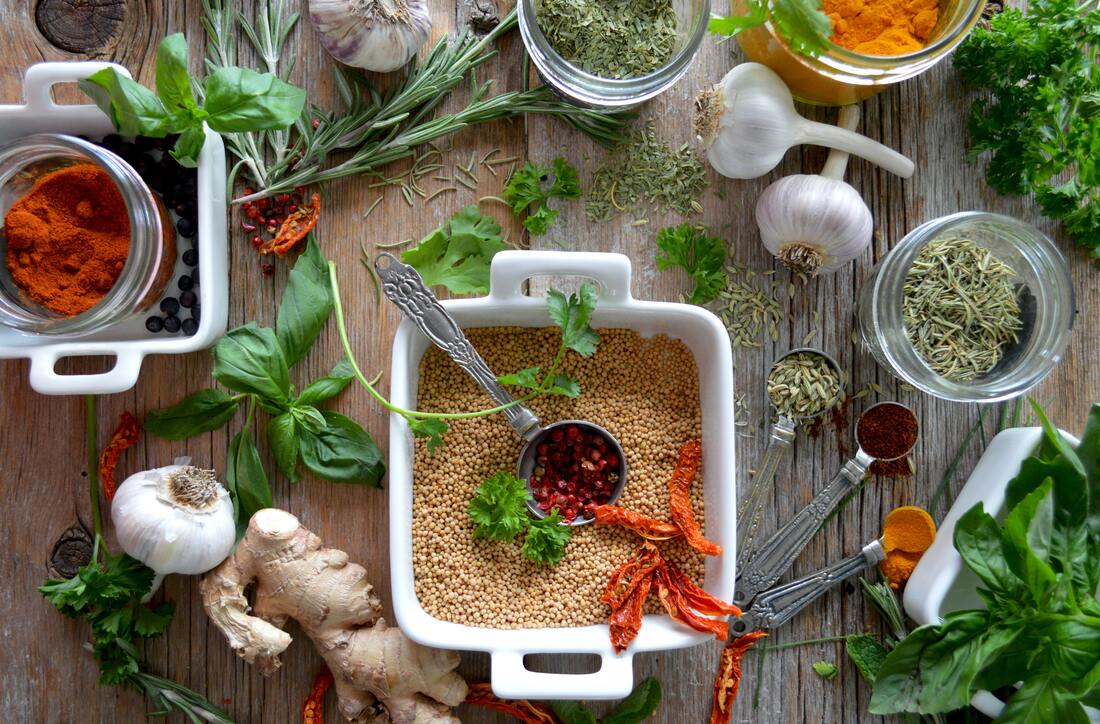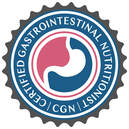|
If you have been following me lately, I have been using the words prebiotics and polyphenols a lot in relation to gut health. Prebiotics are non-digestible carbohydrates and polyphenols found in plant foods that can positively influence the growth of good gut bacteria (such as Bifidobacterium, Lactobacillus, as well as others), thereby reducing the growth of pathogenic or opportunistic bacteria and ultimately improve health. When bacteria consume these prebiotics, they themselves produce short chain fatty acids and other metabolites that influence metabolic pathways. Why is this important?? It is important because this means that your gut bacteria directly influence your health and susceptibility to chronic disease and that your diet and lifestyle directly reflects what bacteria call your gut home. Since many people have heard the term prebiotics in relation to certain fibers, I want to talk about polyphenols today. Polyphenols are part of a large family of plant compounds collectively called phytochemicals or phytonutrients. In the plant kingdom, polyphenols act as a defense mechanism to increase the survival of the plant. In humans, research has found that phytonutrients offer both preventive and therapeutic benefits to combat chronic disease. Interestingly only 5-10% of consumed polyphenols are absorbed in the small intestine. The remainder reach the large intestine where they are consumed by bacteria which generate bioactive compounds with the ability to both influence bacterial residency (promoting good and reducing bad bacteria) in the gut and human health. Polyphenol rich foods include tea, coffee, cacao, dark chocolate, fruits, vegetables, whole grains, nuts and seeds, beans/legumes, and red wine. However, the foods with the highest concentration of polyphenol content by weight are herbs and spices! If you are just a salt and pepper kind of gal, then consider adding more FLAVOR to your meals. Here is a list of the top polyphenol rich plant foods (based on mg per 100g). Cloves, peppermint, star anise, cacao/dark chocolate, oregano, flaxseed, and elderberry are in the top ten. Each category below is ranked from highest to lowest polyphenol content. Although many of you may see your favorite beverages on this list, I encourage you to aim for a wide assortment. Each polyphenol has its own unique ability to benefit your gut microbiome. Therefore, the more variety the merrier! And just because you do not see your favorite plant food on the list (like kale for example), doesn't mean it is not wonderful in other ways.
So, let’s look at some research in regards to polyphenols and bacteria! A recent study investigated which of the following seven culinary spices best support the growth of either Bifidobacterium or Lactobacillus. The spices studied include black pepper, cayenne pepper, cinnamon, ginger, oregano, rosemary, and turmeric. Researchers found that all spices except turmeric enhanced the growth of Bifidobacterium and Lactobacillus species. While all spices suppressed the growth of pathogenic bacteria. Inspired to add more spice to you cooking?? Then make your own herb garden, exciting spice blends, or buy fresh herbs and spices locally. Personally, I love making Madras Curry, Ras el Hanout, and Dukkah! Another research study looking at green tea polyphenols found that daily consumption of green tea altered oral and gut microbiota favorably. After consuming 400ml (~ 2 cups) of green tea per day for two weeks researchers found that the participants had reduced levels of lipopolysaccharide (very inflammatory endotoxin) producing Bacteroidetes, and increased levels of bacteria producing short chain fatty acids in their stools. Green tea consumption was also associated with a reduction of pathogenic oral bacteria fusobacterium. Are you ready to drink more green tea?? Cold brew green tea (recipe to come soon!) contains the highest concentration of polyphenols and the lowest amount of caffeine. This is absolutely a win-win! However, traditionally brewed green tea is also a great choice if you are not sensitive to caffeine. And if enjoying flavorful meals and sipping cold brew green tea aren’t enough reasons for you to jump on the polyphenol train, cacao (this includes dark chocolate >/=75% cacao) ), also improves the microbiome favorably. Studies have found that dark chocolate consumption in humans encourages the growth of both Lactobacillus and Bifidobacterium, but ultimately tends to favor Lactobacillus growth more. Here is a delicious recipe for double chocolate brownie bites (made without sugar) that hit the spot oh so good! Do you have SIBO or IBS? Then you may want to tread carefully. Some polyphenol rich foods are better tolerated than others due to their unique fiber and carbohydrate content. Herbs and spices (except garlic and onion powders), cacao, green tea, some berries, as well as extra virgin olive oil are generally well tolerated. Work with a skilled SIBO dietitian to guide you based on your unique tolerance. Eat the rainbow and reap the benefits!
Are you incorporating a wide variety of these polyphenol rich foods into your diet daily?? Eat Happy, Selva
1 Comment
Low carb diets are trending everywhere right now, especially the latest Carnivore Diet, which is comprised of eating only meat and animal products. And although low carb, high protein diets do help support weight loss increasing satiety and therefore naturally reducing calorie intake, it doesn't mean staying on them long term continues to be beneficial for health. Rather they may be doing your gut more harm than good, especially if consumed for the long term. Research has found that diets high in fat (especially saturated fat) and protein, and consequentially low in fiber, increases the abundance of pro-inflammatory gram negative bacteria in the gut called Bacteroides and other bile loving proteobacteria like Bilophila. These bugs produce a very pro-inflammatory endotoxin called lipopolysaccharide (LPS) which causes inflammation at the gut lining, leading to leaky gut, and increased absorption of LPS into systemic circulation. LPS in elevated amounts plays an important role in the development of IBD and other metabolic diseases. Furthermore, artificial sweeteners often used in low carb diets, continue to shift the gut microbiome towards dysbiosis (an imbalance of good vs bad bacteria), favoring gram negative bacteria. On the other hand, a diet rich in complex carbohydrates and fibers (including prebiotic and polyphenol rich plant foods) provides a good source of microbiota accessible carbs, which supports the growth of gram positive bacteria such as commonly known Bifidobacterium and Lactobacilli as well as other beneficial bacteria such as Akkermansia muciniphila. These beneficial microbes provide many metabolic benefits to the host. So how much fat and protein should an adult consume daily? Research found that diets consisting of 40% or more of calories from fat, shifted the microbiome unfavorably. As for protein, it seems a moderate intake is ideal, neither too little or too much. Since protein is essential for optimal metabolic health too little can impair cellular growth and repair, digestion, thyroid function, and fluid balance in the body. Too much protein on the other hand can lead to protein putrefaction in the colon and increase the risk for colon cancer. Therefore, I generally recommend 25-30g of protein per meal (or about 15-20% of calories) from a variety of different sources, including both plant-based and grass-fed/wild-caught meats and seafood. To sum it up, good bacteria like a varied whole foods, plant focused diet, with moderate amounts of quality fat and protein. Therefore, if you have been following various versions of low carb/high protein diets for many years and still are not feeling your best, then it may be time to switch it up for your gut health and ultimately YOUR health. Instead of opting for three slices of bacon, sausage, and coffee with coconut cream for breakfast, add some COLOR and some SPICE! A microbiome loving breakfast could include poached eggs over curried lentils and spinach with a side of fresh fruit. However, if you struggle with IBS or SIBO, inflammation caused by poorly controlled Celiac Disease or IBD, or a stealth infection, then a diet high in fiber rich foods is not indicated until treated and inflammation has subsided. Speak with your dietitian if you have concerns. What are your thoughts? I love to hear from you!
Eat Happy, Selva |
AuthorLike to read? Then get your evidence based nutrition information here! All posts written by Selva Wohlgemuth, MS, RDN Functional Nutritionist & Clinical Dietitian Archives
August 2023
Categories
All
|
Providing custom functional nutrition therapy since 2015.
Follow HBN on Social Media!
©Happy Belly Nutrition, LLC 2015-2023
Proudly powered by Weebly





 RSS Feed
RSS Feed


